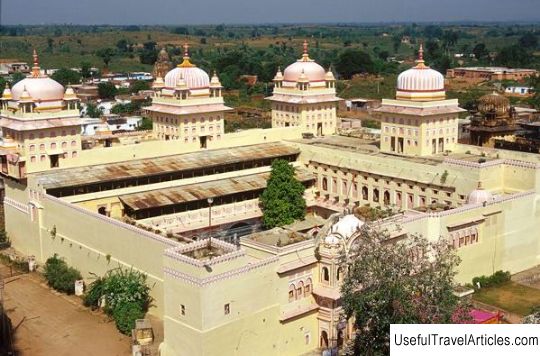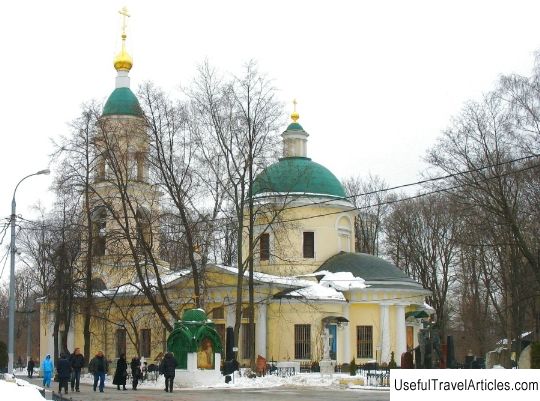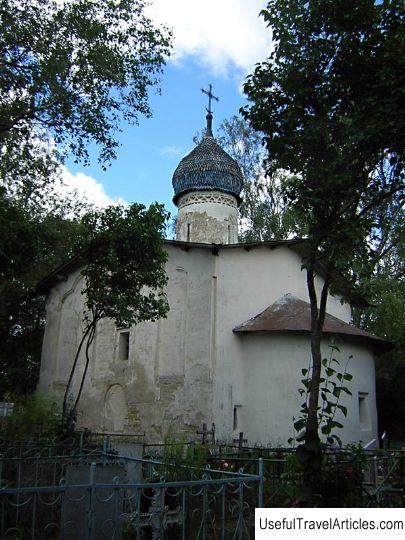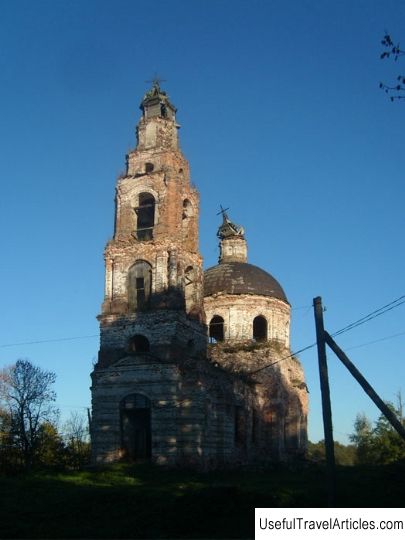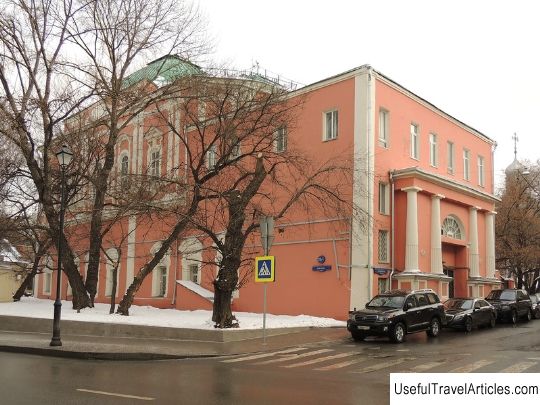Church of the Resurrection of the Word in the village of Terebeni description and photo - Russia - North-West: Pskov region
Rating: 7,8/10 (600 votes) 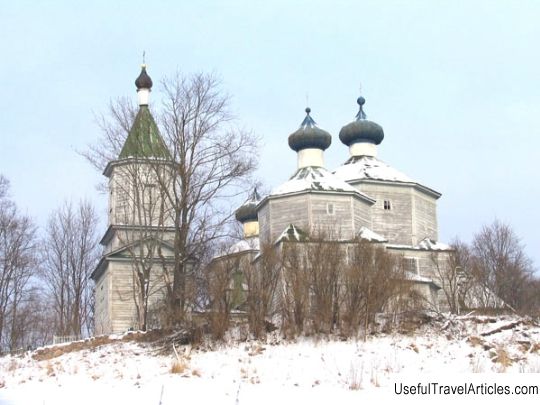
Church of the Resurrection of Slovusche in the village of Terebeni description and photos - Russia - North-West: Pskov region. Detailed information about the attraction. Description, photos and a map showing the nearest significant objects. Photo and descriptionThe Church of the Resurrection Slovushchee is located in a village called Terebeni, which belongs to the Opochetsky district. The construction of the church was carried out in the second half of the 18th century. Some sources claim that the temple was built by order of the local landowner Karaulov, others - by order of the brigadier Mikhail Illarionovich Kutuzov, who in the future became a famous commander. The church was built with a wooden one and sheathed with boards. The Church of the Resurrection of the Word is one of those rare monuments of wooden architecture that have survived to our time on the Pskov land. It is known that in 1895 a parish school was opened at the church. There is a crypt in the basement of the church, which contains the graves of Lieutenant General Golenishchev-Kutuzov Illarion Matveyevich and his wife Anna Illarionovna, whose family estate was located very near the village of Terebeni. There is a cemetery near the church, on the territory of which the ancestral crypt of the famous landowners Lvovs, as well as the graves of the Karaulovs, who were also reputed to be landowners, and ancient stone-paved crosses have been preserved. The Church of the Resurrection of the Word consists of several related. On the west side of the church, a small refectory room adjoins the rectangular quadrangle, and on the south and north sides there are single-apse side-chapels of this type. The church bell tower is multi-tiered, hipped and connected to the refectory room through a covered passage. The bell tower was built in the 19th century. The church is a pillarless temple, while the transition from the quadruple to the octagon is made without the fall of the quadruple. The overlapping of the octagon side-chapels and the main room was carried out with flat and equipped with rafter tents. The refectory room and the passage from the church bell tower are covered with a gable roof on the rafters. The main premises of the church are distinguished by an impressive vertical space, equipped with an elongated refectory. From the refectory there are small openings, not only in size, but also in configuration. The building of the Church of the Resurrection stands on a foundation made on a granite stone boulder. The walls of the temple premises are made of a log, the diameter of which is 25-30 cm, cut into the paw. The church is completely sheathed with boards The upper part of the octagon, namely its central room, adorned with a decorative sash made of rarely exhibited brackets made of wood. Temple walls are covered with paint. Until now, the church has preserved three wooden iconostases dating back to the 16th century, which are exquisitely and richly decorated with gilded carvings. The temple iconostasis of the main Resurrection Church is distinguished by a special and rather rare art of woodcarving, as well as painting. The interior design of the church is full of famous works of ancient Russian easel painting dating back to the 17th - early 18th centuries. In this case, it is worth noting the following icons: Entry into Jerusalem, Descent into Hell, Trinity, Transfiguration, Meeting, as well as Christ the Almighty. A list of icons from the Deesis tier: Paul and Peter, Michael and Gabriel, the Mother of God and John the Baptist, the Prudent Robber and others. In the Church of the Resurrection, three crosses made of wood have survived, one of which bears an inscription stating that the cross was previously in the Church of the Resurrection of Christ, which existed under Ekaterina Alekseevna, as well as under her heir, Prince Pavel Petrovich and his wife Maria Fedorovna. On the second cross it is written that it was consecrated in the Church of the Sign of the Most Holy Theotokos under Empress Ekaterina Alekseevna, according to the blessing of the Holy Synod; the ritual itself was conducted by the Archbishop of Riga and Pskov Innokenty in the fall of November 26, 1778. On the third cross there is an inscription that the consecration of the cross took place in the church of the Great Martyr Barbara during the reign of Empress Ekaterina Alekseevna, as well as during her heirs. Consecration took place with the blessing of the Synod of Riga and Pskov Archbishop Innokenty. In the cemetery you can see more than 10 medieval crosses made of stone.         We also recommend reading Grodno Drama Theater description and photos - Belarus: Grodno Topic: Church of the Resurrection of the Word in the village of Terebeni description and photo - Russia - North-West: Pskov region. |
